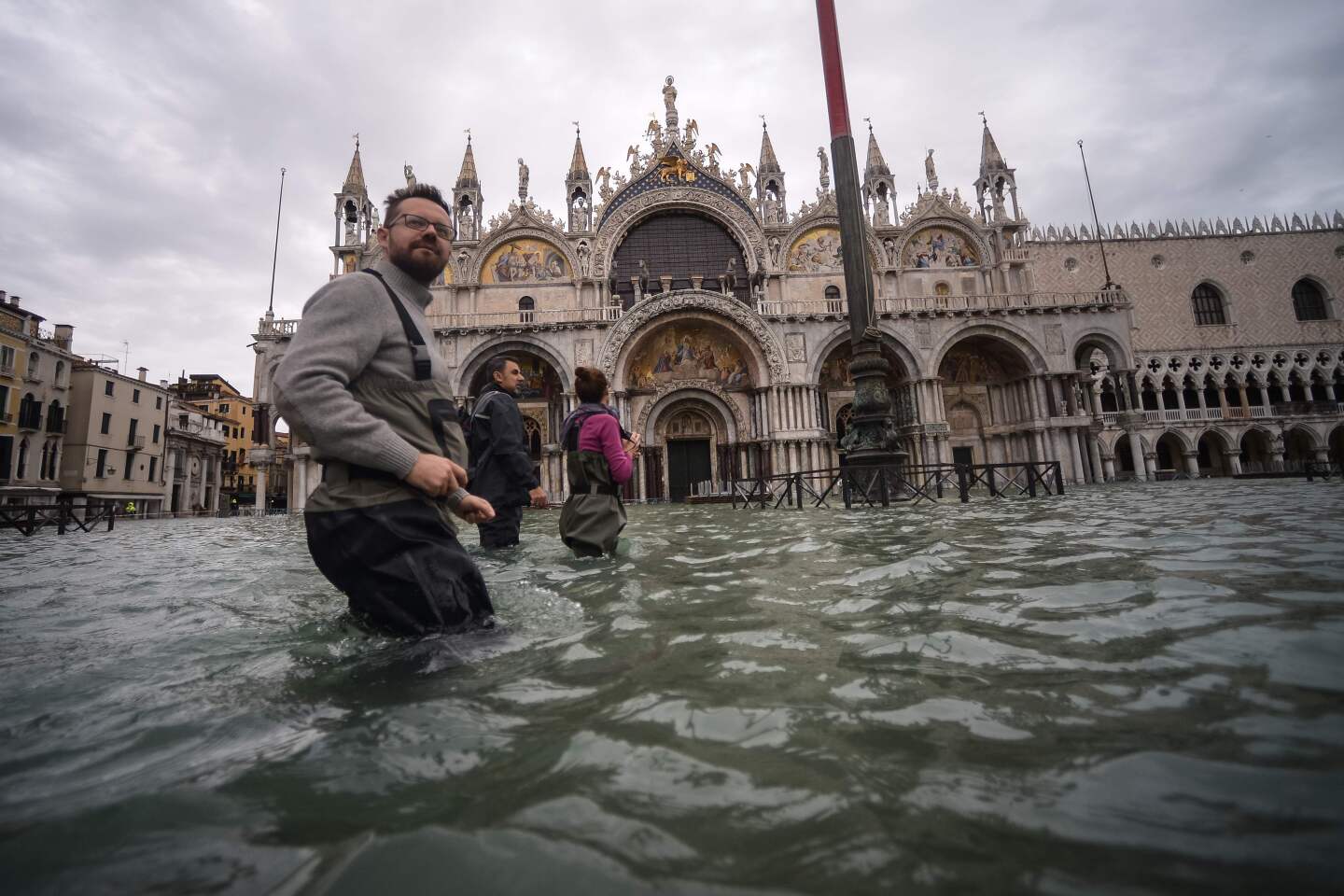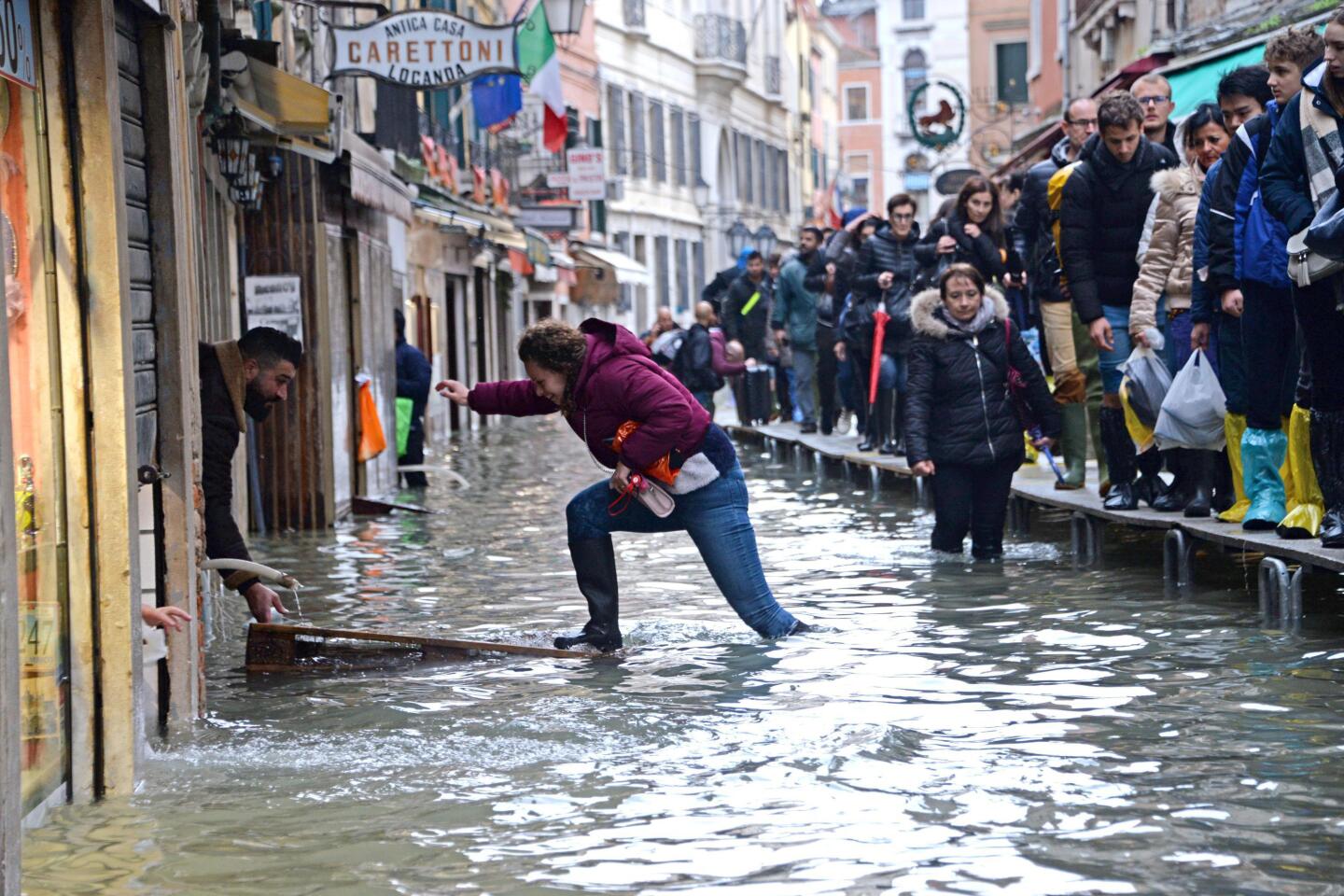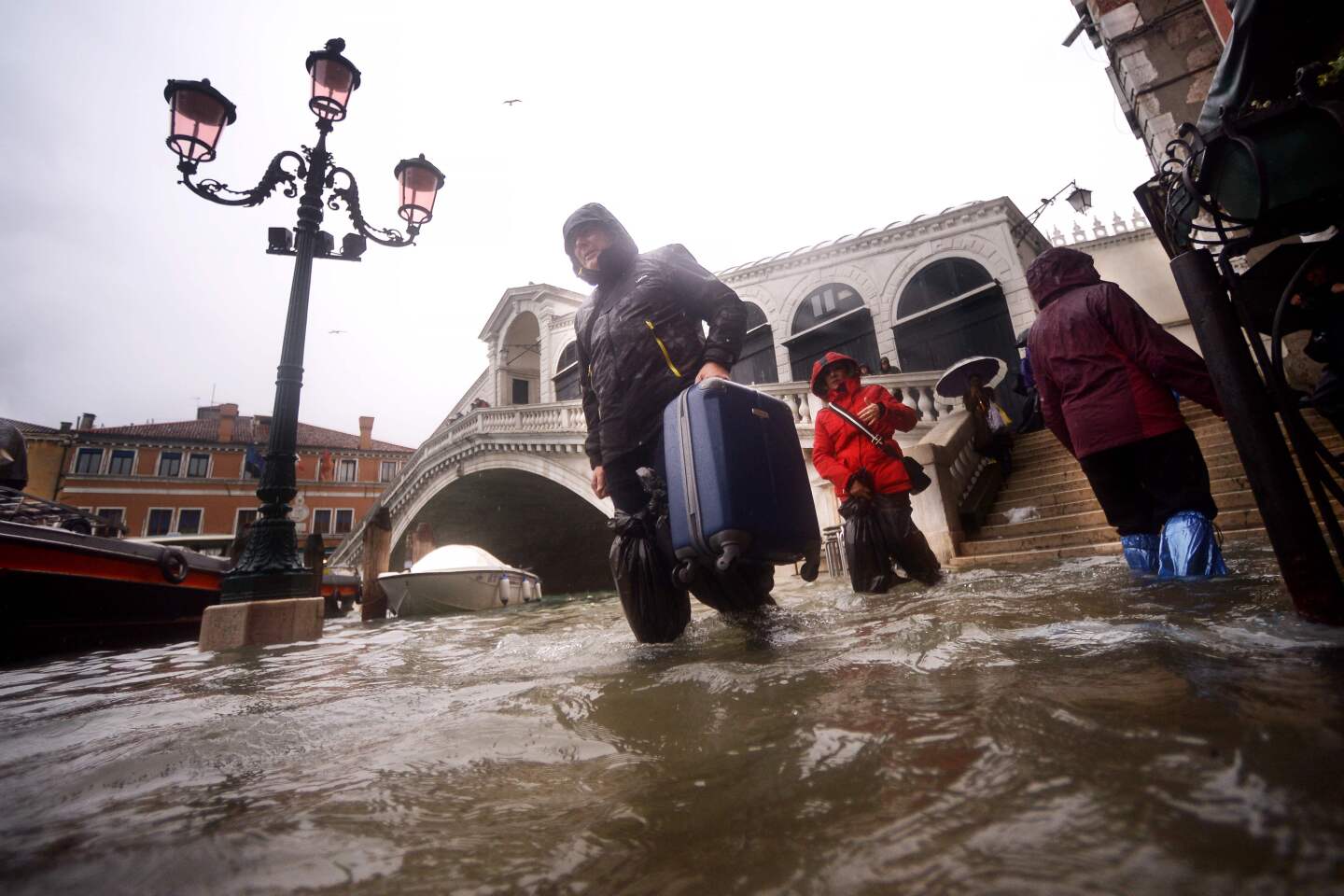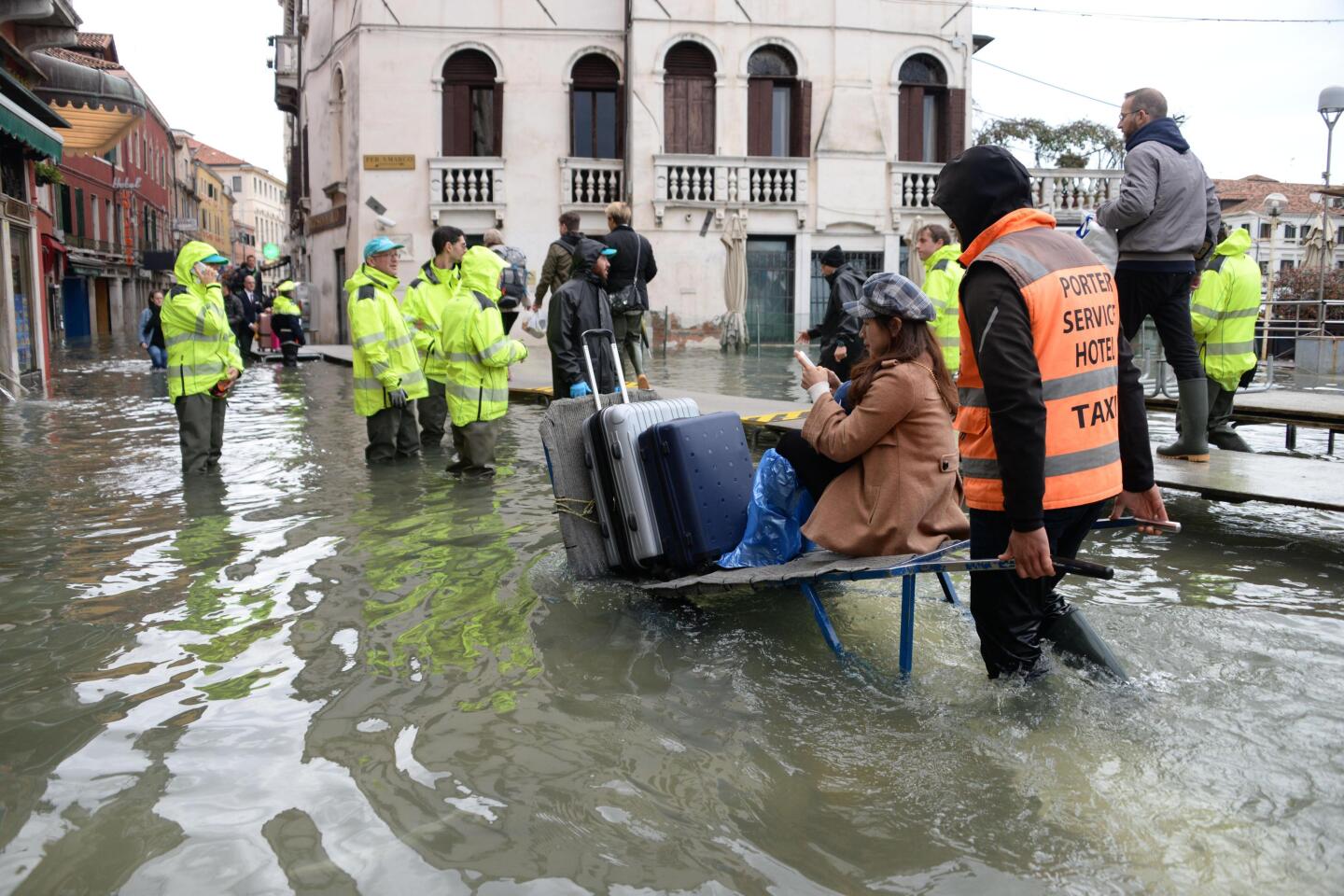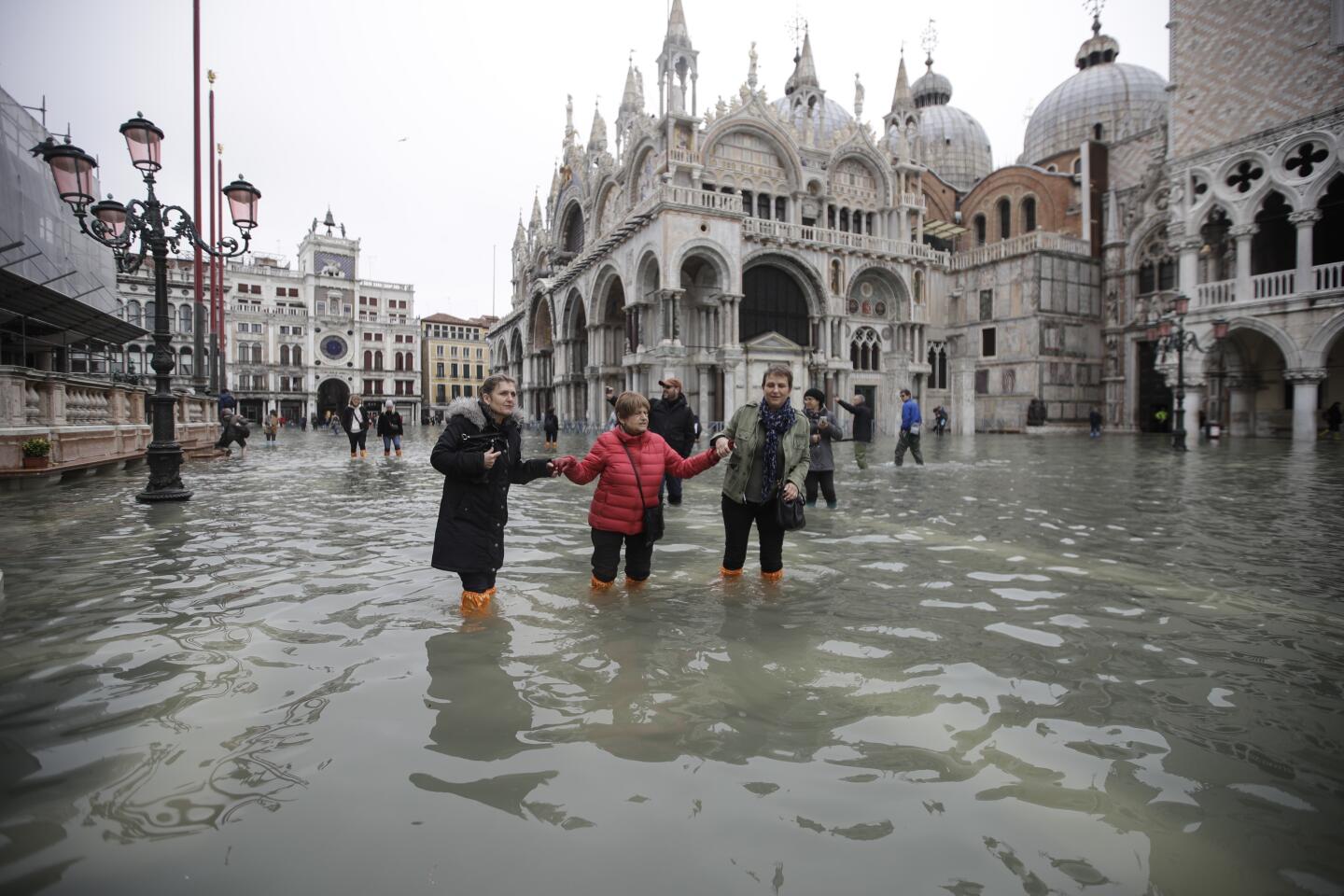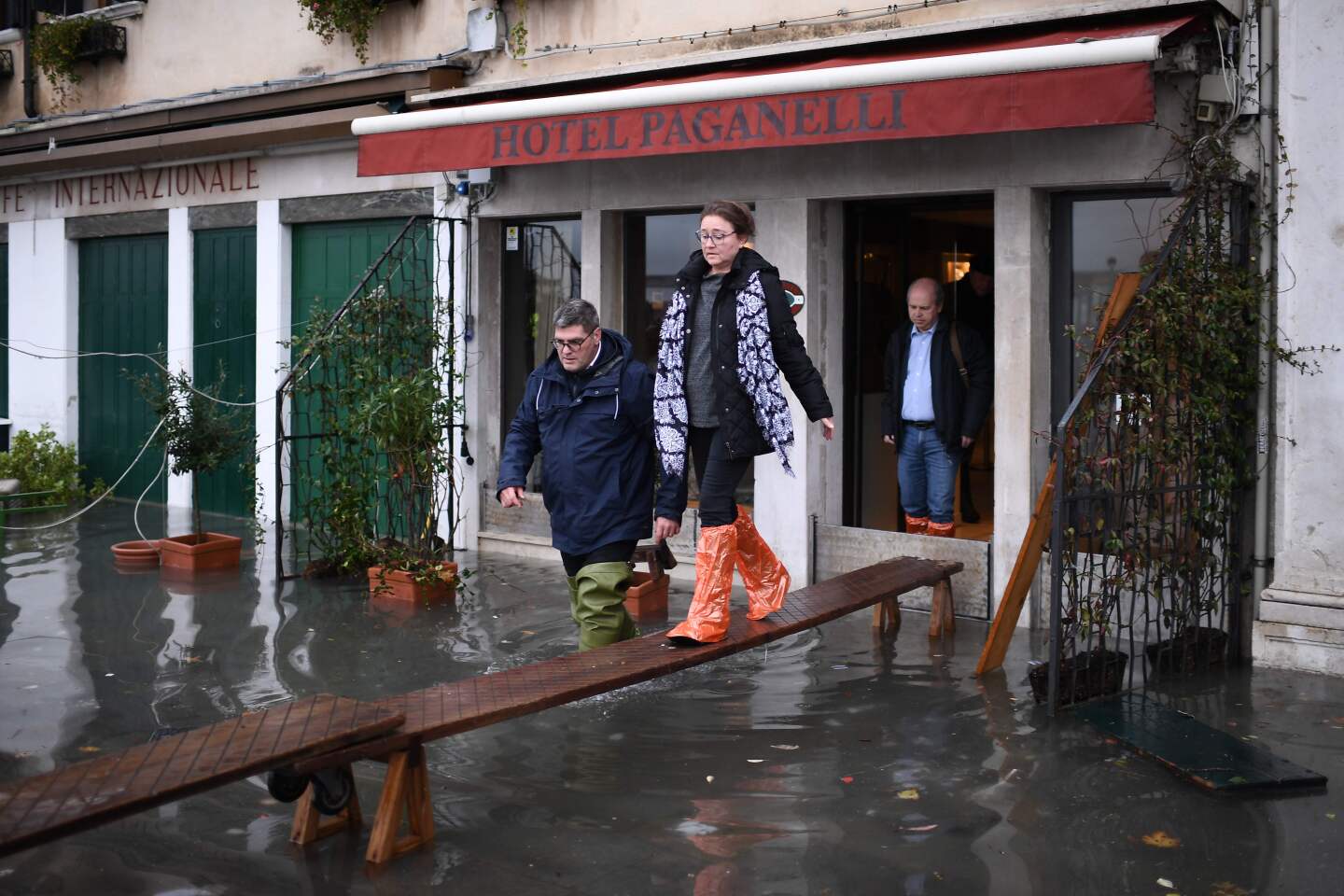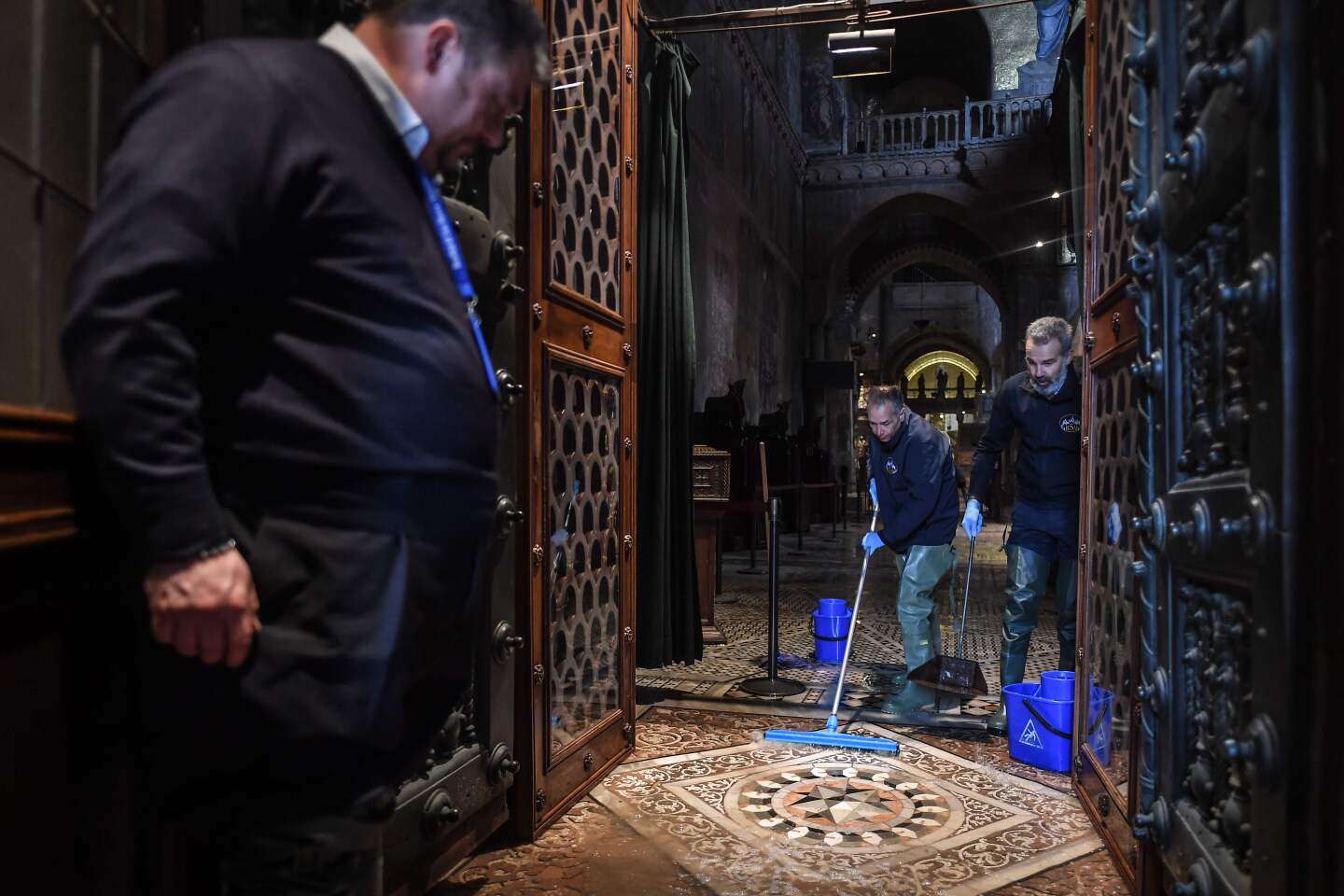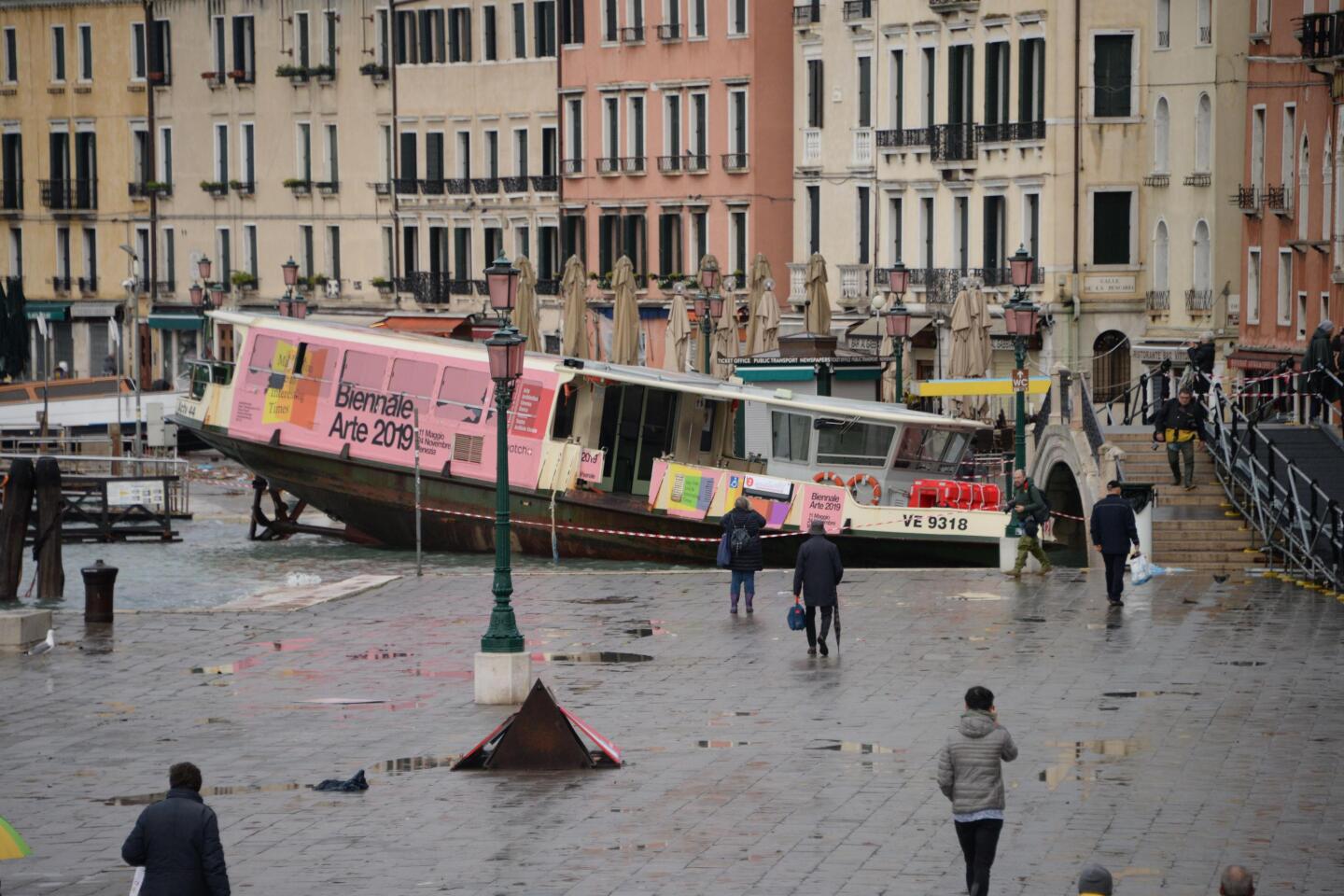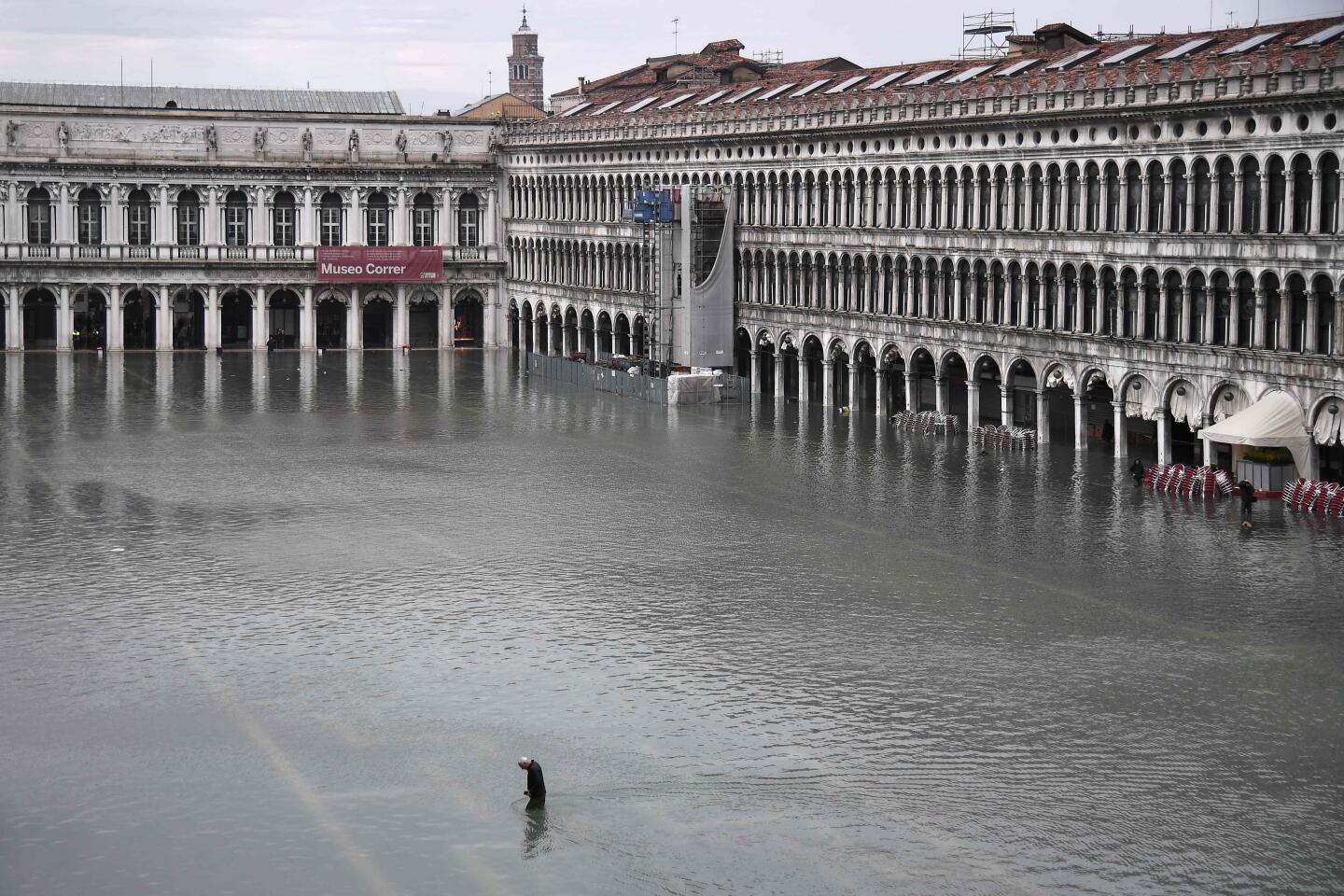Venice, Italy, has been a city of water for centuries, but this is something else
- Share via
MILAN, Italy — The worst flooding in Venice in more than 50 years prompted calls Wednesday to better protect the historic city from rising sea levels as officials calculated hundreds of millions of dollars in damage.
Water levels reached 74 inches Tuesday, the second-highest level ever recorded in the city and 2½ inches less than the historic 1966 flood. Another wave of exceptionally high water followed Wednesday.
“Venice is on its knees,” Mayor Luigi Brugnaro said on Twitter. “St. Mark’s Basilica has sustained serious damage, like the entire city and its islands.”
One death was blamed on the flooding, on the barrier island of Pellestrina. A man in his 70s was apparently electrocuted when he tried to start a pump in his dwelling, said Danny Carrella, an official on the island of 3,500 inhabitants.
In Venice, the crypt beneath St. Mark’s Basilica was inundated for only the second time in its history, with water entering through the windows and bypassing all defenses. Damage was also reported at the Ca’ Pesaro modern art gallery, where a short circuit set off a fire, and at La Fenice theater, where authorities turned off electricity as a precaution after the control room was flooded.
Tourists floated suitcases through St. Mark’s Square, where officials removed walkways to prevent them from floating away. The water was so high that nothing less than thigh-high boots afforded protection. Water poured through wooden boards that shop and hotel owners have placed in front of doors to hold back water during flooding. Tourists staying on the ground floors of hotels were forced to move to upper floors overnight.

“I have often seen St. Mark’s Square covered with water,” Venice’s Catholic patriarch, Msgr. Francesco Moraglia, told reporters. “Yesterday there were waves that seemed to be the seashore.”
Brugnaro said damage would reach hundreds of millions of dollars, and he called on Rome to declare a state of emergency. Italian Prime Minister Giuseppe Conte was due to visit the city later Wednesday.
“We are not just talking about calculating the damage, but of the very future of the city,” Brugnaro told reporters. “Because the population drain also is a result of this.”
The flooding was caused by heavy rains coinciding with a full moon that brought high tides that were pushed into Venice by southerly winds. At the same time, rising sea levels due to climate change make the city built among a system of canals even more vulnerable.
Five ferries that serve as water buses, a crucial means of transportation, were damaged.
Photos on social media showed a city ferry, taxi boats and gondolas grounded on walkways flanking canals. At least 60 boats were damaged, according to civil protection authorities.
Pellestrina was one of the worst-hit areas. Facing the sea, water came over the banks of the canal and filled the island like a basin. Carrella said more than 3 feet of water remained Wednesday because of broken pumps.
Brugnaro blamed climate change for the “dramatic situation” and called for a speedy completion of a long-delayed project to construct offshore barriers.
Called Moses, the movable undersea barriers are meant to limit flooding. But the project, which was opposed by environmentalists concerned about damaging the delicate lagoon ecosystem, has been delayed by cost overruns and corruption scandals, with no launch date in sight.
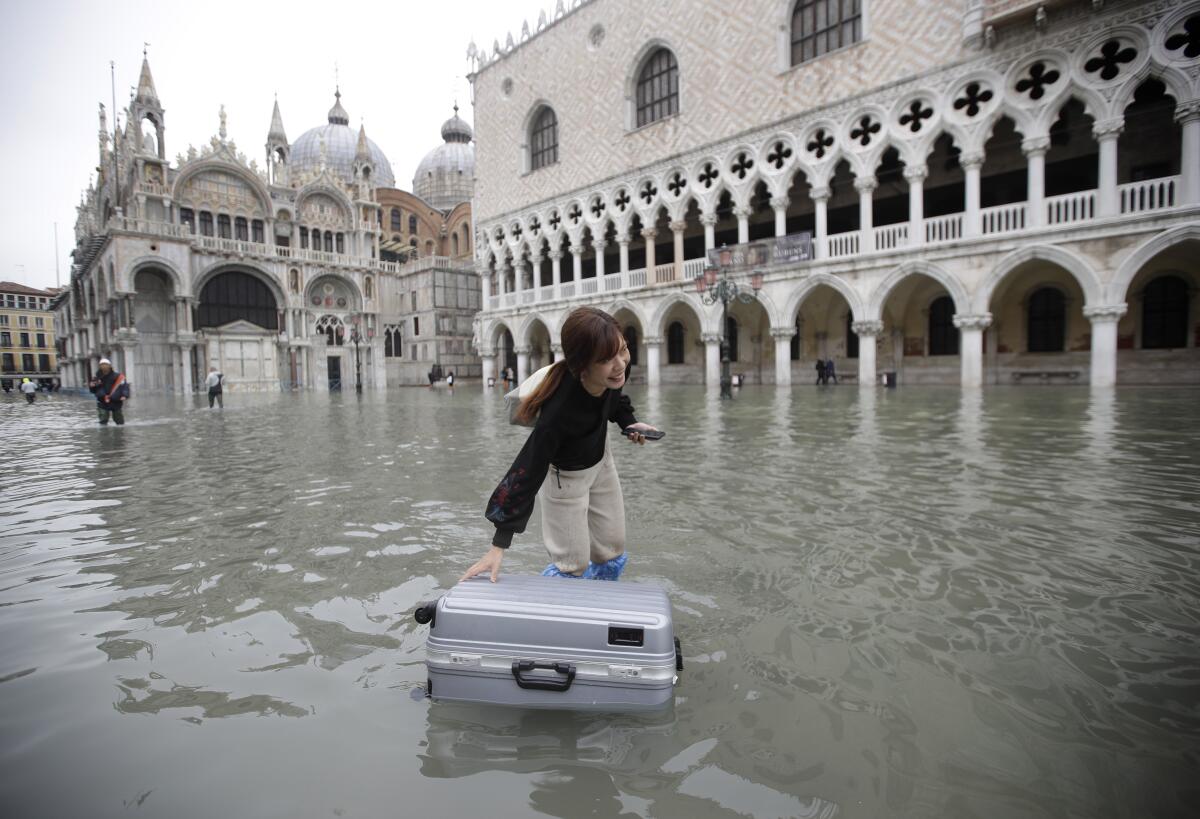
Luca Zaia, governor of the Veneto region, told SkyTG24 that the barriers were almost complete, but it was unclear whether they would work against such flooding.
“Despite 5 billion euros [$5.5 billion] underwater, St. Mark’s Square certainly wouldn’t be secure,” Zaia said, referring to one of Venice’s lowest points, which floods when there is an inundation of 31.5 inches.
Zaia also expressed concern for snowfalls in the mountains above Venice, where up to 47 inches were expected.
Across the Adriatic Sea, a heavy storm and sweeping winds also caused floods in Croatia and Slovenia.
In the Croatian city of Split, authorities on Wednesday said the flooding submerged the basement area of the Roman-era Diocletian’s Palace, where emergency crews battled to pump out the water.
Slovenia’s coastal towns of Piran, Izola and Koper reported that sea levels reached the second-highest point in 50 years.
More to Read
Sign up for Essential California
The most important California stories and recommendations in your inbox every morning.
You may occasionally receive promotional content from the Los Angeles Times.
